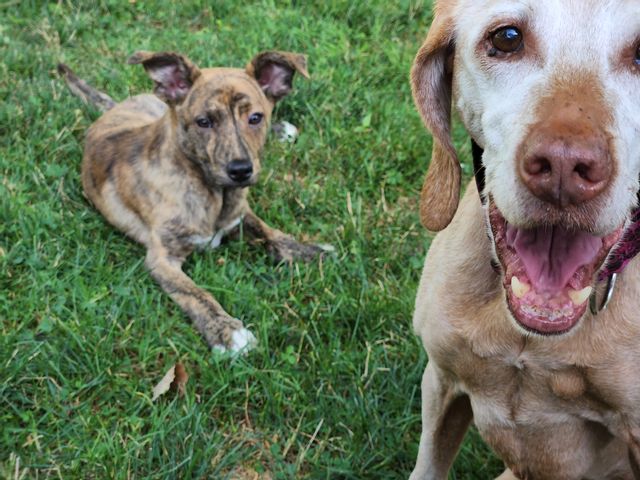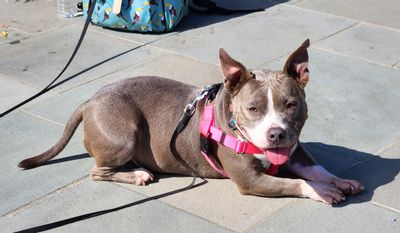Understanding Your Dog's Body Language
Understanding Your Dog's Body Language: The Secret Language of Our Four-Legged Friends

As a trainer and a holistic pet health coach, one of the most valuable skills I can share with pet parents is the ability to understand what their dogs are saying. Just like humans, dogs have their own way of communicating, our furry friends have a rich, complex language – they're talking to us all the time, we just need to learn how to listen!
The Four Key Elements of Canine Communication
1. Tail Talk
Think of your dog's tail as their emotional billboard. While we often assume a wagging tail always means happiness, it's actually much more nuanced:
• High, stiff wag: Alertness or possible tension
• Relaxed, middle-height wag: Generally happy and content
• Low, gentle wag: Friendly and approachable
• Tucked tail: Fearful or submissive
2. Ear Expression
Your dog's ears are incredibly expressive, even if they're floppy! Pay attention to:
• Forward-facing: Interest and engagement
• Pulled back: Could indicate friendliness or submission
• Flattened against head: Usually signals fear or stress
3. Eye Contact and Facial Expressions
Dogs communicate volumes through their eyes and facial expressions:
• Soft, blinking eyes: Relaxed and comfortable
• Hard, direct stare: Could signal tension or challenge
• "Whale eye" (showing whites): Usually indicates stress or discomfort
• Relaxed, slightly open mouth: Content and at ease
4. Body Posture
The overall body position tells us about their emotional state:
• Loose, wiggly body: Happy and playful
• Stiff, frozen posture: Alert or potentially stressed
• Lowered body: Could be playful or submissive
• Play bow: Universal invitation to fun!
Why Understanding Body Language Matters
When we better understand our dogs' communication signals, we can:
• Prevent potential behavioral issues before they escalate
• Create more effective training sessions
• Build stronger bonds with our pets
• Ensure our dogs feel safe and understood
• Make better decisions about their care and environment
Pro Tip: Remember that these signals should always be read in combination and context. Just like human communication, it's the whole picture that tells the true story!
Next Steps for Pet Parents
Start observing your dog during different daily activities:
• How do they look during meal times?
• What signals do they show during walks?
• How do they communicate during play?
Keep a small journal of your observations – you'll be amazed at how much your dog has been telling you all along!
Stay tuned for our next blog in this series, where we'll dive deep into stress signals and calming behaviors – essential knowledge for every pet parent!




